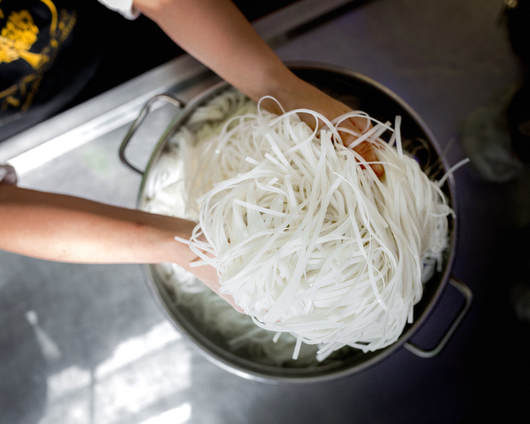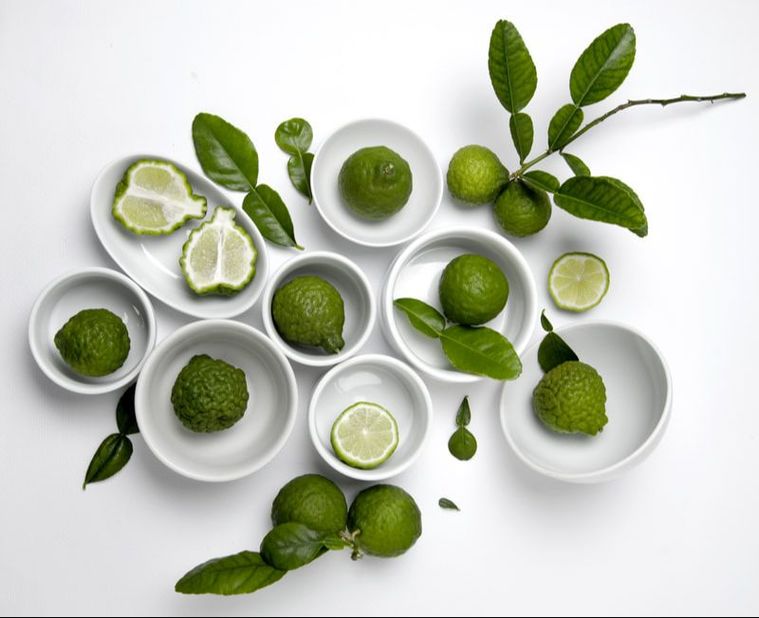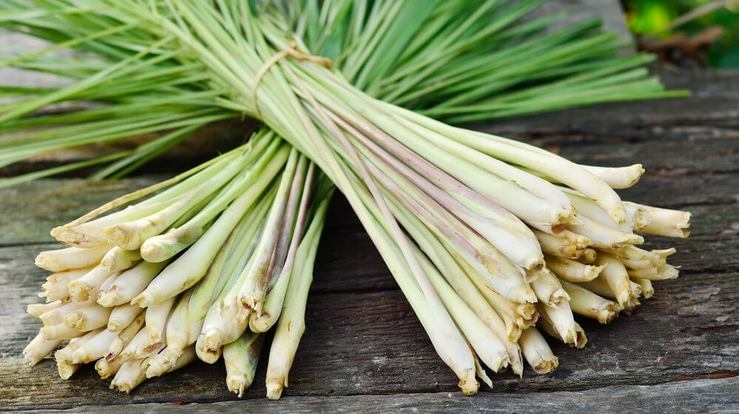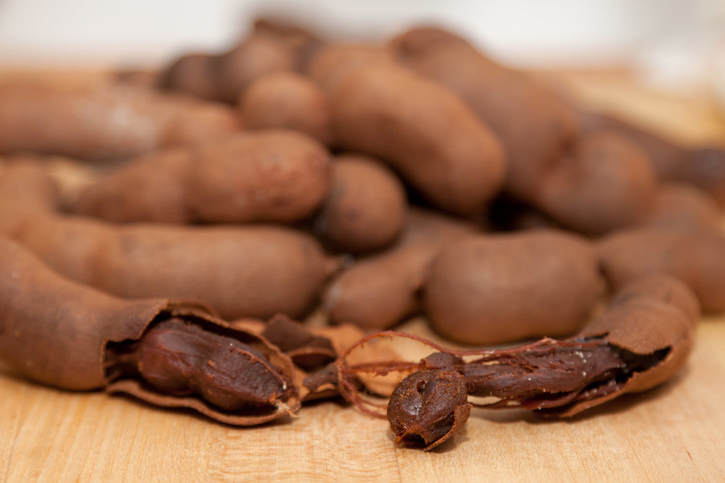|
The Taste kitchen is heat central 6 days a week. Even though we only operate during dinner hours, the behind-the-scene workload often takes all afternoon while some dishes need to be prepared days ahead. Since heat and speed are two crucial components to Thai cooking, our chefs have to juggle all stations when the orders fly in. The busiest night could mean more than a hundred orders to cook in the mere length of three and a half hours. The rumour is true, only chefs with super human abilities could survive our version of the Hell's Kitchen. We talked to our chef Thong to get an insight of what it is like working as a chef at The Taste, #LivingTheTasteKitchenLife. What is a usual day like in the Taste Kitchen? We open for dinner from 5:30 to 9 pm, so we usually start in the early afternoon and finish around 10pm. Prepping takes massive amount of time and there are lots of details to take care of, mostly ingredients and wok station. Preparing meats and vegetables so they are ready to go, and we need to make sure the woks are smoking hot when we use them. We have soups on our menu, so we need to get soup dishes cooking first so the flavours could develop over time. Then we soak dry rice noodles for Pad Thai, those noodles need to be soft enough to work by the time orders come in. There are so many different sauce combinations for our dishes which means we also have to prepare all the sauces for the stir-fries. What are the most-ordered dishes at The Taste and what makes them difficult to prepare? 1. Pad Thai Pad Thai is always a popular dish to order across all Thai restaurants around the world. The trickiest part is the sauce - we have to make sure it is a perfect balance and it could make or break the dish. 2. Cashew Nut Stir Fry It is a very popular stir fry dish with nuts and lots of vegetables. Stir-frying in a wok is always a little difficult to get right because of the intense heat. We have to make sure the heat is consistent so it doesn't overcook the vegetables. 3. Thai Garlic Black Pepper Stir Fry The sauce is a very strong one, so it is important to keep the flavour well-balanced when making the sauce, we can't have too much garlic or black pepper otherwise it will become very overpowering. What's the best part and worst part of being a chef? Travelling and eating, always. As a chef you have opportunities to travel around the world for your job, to cook and eat different cuisines around the world is always exciting. It also helps to broaden your own horizon as a chef when it comes to creativity. On the other hand, the job sometimes creates a lot of pressure and long hours in a steam hot kitchen can be physically demanding. But it's worth it! What's your favourite dish on our menu? The Taste Pad Thai, it is a no brainer, we should trademark it. Last but not least, what does Thai Food mean to you? Thai food is unique because it is full of flavours. It's something that reflects the culture and heritage of us as Thai people and knowing others around the world enjoy it as much as we do gives me immense joy, especially as a Thai chef. Can you see yourself as a chef in The Taste Kitchen now? Do you think you could handle the pressure of cooking more than thirty orders in under an hour? We have so much respect for the behind-the-scene heroes responsible for our consistent and mouth-watering Thai classics. If you don't see yourself fit for the challenge, at least you know our superheroes are always on 67 Lake Road preparing your favourites. Try Thong's recommendations in store, or on Uber Eats, and btw, do you know that we have recently launched online ordering?
2 Comments
Most Aucklanders have been to a fair amount of Thai establishments as Thai food is one of the most popular cuisine can be enjoyed dine-in and take-out. Thai food is famous for its robust flavours, fresh herbs and heat, often demonstrating a perfect combination of savoury and sweet. Dishes like Pad Thai, Green Curry, Tom Yum, and many others have become lots of people's go-to orders. But, how well do you think you know about Thai ingredients? Where does the sourness come from in Tom Yum? What produces the tanginess in Pad Thai? The Thai diet is much more complicated than your golden asian-flavour trifecta of soy, ginger, and scallion. Now the Taste Guide has rounded up a few basic but quintessential ingredients we use in most of our dishes. 1. Coconut Milk Let's start with something rather well-known. Coconut milk is widely used in South Asian, South east Asian and South American cooking especially desserts and curries. Coconut milk technically isn't milk, but a natural liquid comes from the flesh of coconut. It adds a creamy consistency to any stew with a hint of sweet fragrance. Coconut milk has anti-inflammatory effect and contains healthy fatty acids, which help with various health conditions such as high blood pressure and digestive issues. Notable dishes: Curries, Tom Kha 2. Thai Basil Basil is not an unfamiliar herb, it is a stable in western cooking and most people's pantries. It is famous for its unique sweet scent and often added to dishes last minute as garnish. Thai Basil has a slightly different flavour profile, notably its sweet, anise-like scent and a note of spiciness. In addition to its purpose in cooking, it is a herb with multiple healing benefits, due to its anti-bacterial properties, therefore great for infections and Cardiovascular health. Notable dish: Pad Kaplao 3.Kaffir Lime Leaves Tried it before in some exotic fusion cocktails? Those leaves are very popular ingredients in South and Southeast Asian cooking, to simply add fragrance and decrease unwanted odours. The leaves are identified by their potent citrusy and floral scent which made them great to freshen up the flavour profile of any heavy dish. Kaffir Lime and its leaves historically have several medicinal uses such as aiding acid reflux, treating infections and preventing cancer. Notable dishes: Thai beef salad, Panang Goong 4. Lemongrass Lemograss is a tropical plant that can be found in lots of countries across the world, used as a culinary herb in many Asian countries and medicinal herb in India. Many know Lemongrass for its sharp lemon-like smell and taste, an important ingredient in Thai cuisine for contributing the tangy flavour besides a lemon squeeze. As for its medicinal usage, it was proved to be particularly affective for digestive problems, high blood pressure, convulsions, pain, vomiting, cough, rheumatism, fever, the common cold, and exhaustion. Notable dishes: Tom Yum, Curries 5. Tamarind Tamarind is a tree with pod fruits and edible pulps. Tamarind pulps are traditionally used in cooking and medicine, or some times, metal polishing. The fresh pulps are juicy, sweet and sour in taste, high in fatty acids, sugar, Vitamin B and unusually calcium. Tamarind could be used in both sweet and savoury dishes. Tamarind paste is often used in chutneys and curries. People take tamarind supplements to treat digestive disorders, gallbladder and liver issues, some even use tamarind for beauty routine in order to get glowy skin. Notable dish: Pad Thai 6. Galangal Also known as Thai ginger, Galangal seems to be a doppelgänger of ginger but these two taste nothing alike. Galangal is earthy, sweet and citrusy while ginger is spicy. Galangal is naturally rich in iron and vitamins, good for nausea and decreases bloating. The herb could stimulate appetite hence is often used to treat eating disorder. Notable dish: Tom Kha Know what you eat to eat better. Now you know the sourness is not just lemon, the sweetness is not just sugar. Be adventurous, try different flavours and you might just find your new cup of tea. Order all recommended dishes at The Taste on Uber Eats, our website, or visit our store at 3/67 Lake Rd.
If you are a regular at The Taste, you must be familiar with our spring roll promotion - with one purchase of our delicious homemade spring rolls, we donate one dollar to The Wilson Home Trust. Since December 2017, The Taste has been a proud supporter of The Wilson Home Trust, joining the movement to provide children with disabilities a better future. We recently spoke to Carol White, the trust manager for The Wilson Home Trust about our collaboration, what makes a good ethic business, and other wonderful things The Wilson Home Trust has been doing. The Taste: Hi Carol, it has been a great pleasure working with the Wilson Home Trust, would you consider the collaboration with The Taste a success? Has our collaboration helped The Wilson Home Trust in any way? Carol: The Wilson Home Trust is thrilled with the success of the promotional fundraising The Taste has been running since late last year. Over our 82 year history, the Trust and its historical site on Lake Road have been utilized and enjoyed by many in both the local Takapuna Devonport community and beyond. Over our history the Trust has received support from numerous individuals, organisations and businesses locally to help support the work we do and ensure our sustainability to date and beyond. Our collaboration with The Taste is another great example of these ongoing relationships in our community and this relationship is particularly special in that The Taste team has been supporting the Trust via this campaign over several months, and continue to do so in the coming months. The Taste: Would you like to tell us what are the other wonderful things The Wilson Home Trust has been working on? Carol: This month we have expanded our school holiday programmes to include a programme in South Auckland. Registration numbers have been much higher this time around and the children who have attended to date, have given very positive feedback. We hope to be able to offer a programme in West Auckland as well in the next holiday break. Last month we launched our new website, which is much more user friendly and informative. You can also apply for grants and register for holiday programmes and other activities via the new website so we are encouraging everyone to check the website regularly www.wilsonhometrust.org.nz. And watch this space for a concert event we are looking to hold onsite in mid September. More details will be on our website and facebook pages in the next few weeks. The Taste: What inspired you to become part of the Wilson Home Trust team? Carol: The generosity and legacy of the Wilson family who gifted their home and land for the benefit of others, was a key reason for me joining the team. Being able to continue the Wilson family legacy and look at ways the Trust can help more families in our Trust deed area. I also wanted to use my skills, expertise and energy to make a difference in people’s lives, in particular people who need support and resources to help manage huge challenges life has thrown at them. The Taste: From a personal point of view, what do you think is the best way to give back to the community? What do you think an ethical business could do to make a difference? Carol: One of the most precious commodities we all struggle with is time and trying to fit in everything into a 24 hour day. So in terms of giving back to communities, spending time with people (either elderly, sick, disabled, new migrants, etc) would be something of value. Another areas where business can give back to the community is to offer their resources to others at no cost – this could be sending specialist staff ie IT people to small businesses to help with IT issues, or sending skilled tradespeople to help with repairs and maintenance. Despite being a small business, we try to give back to the community as much as we can in any way possible, and we want to convey the idea through our passion for food. The story of Wilson Home Trust inspires us to continue doing more good for our customers and the community, and the success of our campaign couldn't be made possible without the support from our dear customers. Find out more about the Wilson Home Trust at www.wilsonhometrust.org.nz. Order our finger-licking good spring rolls to be part of the Buy One - Give One campaign on Uber Eats or visit our store at 3/67 Lake Rd, Devonport.
|
|
Opening hours:
Tuesday - Thursday 5.30 - 9 pm Friday - Sunday 5.00 - 9 pm Monday closed |
Address:
3/67 Lake Rd Devonport Auckland New Zealand |
We are here |
@2014 The Taste. All rights Reserved









